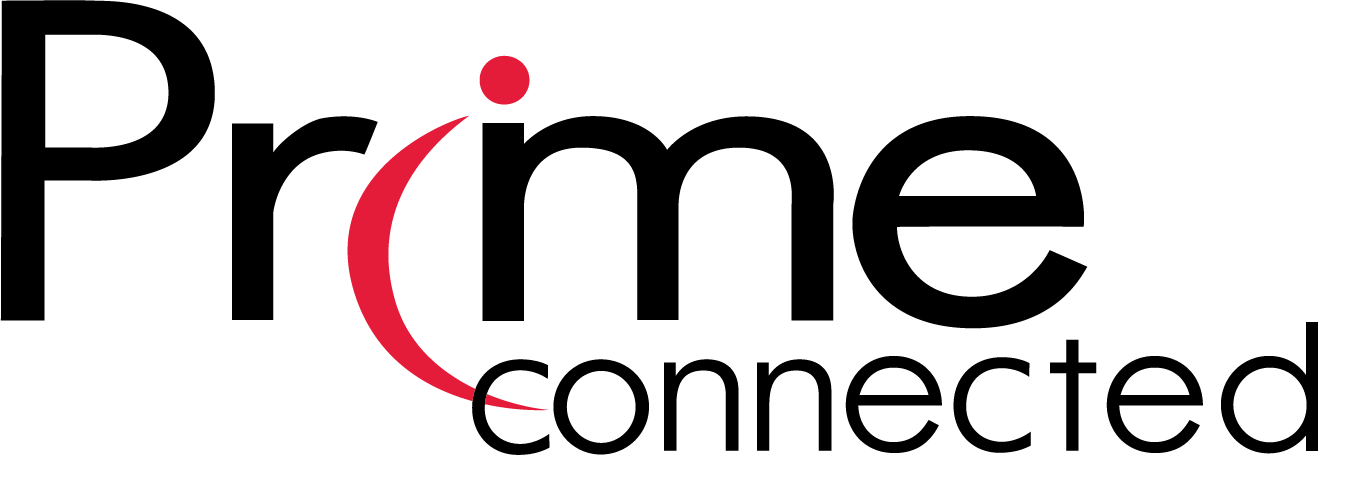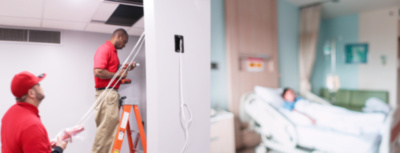Low-Impact, Secure Medical Equipment Deployment in Critical Hospital Settings
Imagine this: A technician is working within the NICU unit of a Midwestern hospital. As he begins uploading patient monitoring software in one of the rooms, the patient and her family are ushered in. The family is visibly distraught. During this very private, devastating moment, the technician must make a series of decisions. Should he stay and continue uploading software? Should he offer condolences to the family? What if someone asks him for a drink of water from the sink behind his ladder? If he must stay in the room to complete a critical software upload, what does he need to do to remain professional?
In a situation such as this, both the manufacturer of the equipment being installed and hospital personnel are highly invested in the behavior and demeanor of the installer. The consequences of a technology installer’s performance and its impact on the patient experience can be serious— even life-threatening.
Installing, maintaining and upgrading technological devices within critical medical settings is an art, and not every technician can provide the soft skills needed. This article offers insights and a checklist to help ensure low-impact technology deployment in medical institutions.
Growing Need for Technology to Upgrade Patient Experience
The hospital industry has exploded in a rush of competition to accommodate the aging population of baby boomers (and for other reasons). Technology plays a large part in helping hospitals become competitive. This has expanded the market for devices such as nurse call systems and patient monitoring systems; the hospital with the best technology is often the one patients and families see as the most responsive and modern.
However, upgrading technology can be a double-edged sword. If it’s not done well, with the least possible impact on patients, medical device deployment can damage a hospital’s image and/or the reputation of the manufacturer who has assigned technicians to install equipment.
Ralph Thompson, National Training Manager for Prime Communications Inc. (PCI), explains the seriousness of these concerns: “We know one mistake could mean lost revenue or an outage. More importantly, a medical device service mistake in a hospital environment could mean someone’s life. We need to minimize issues and fine-tune our operation during installation and maintenance, and it’s imperative that we get it right the first time.”
PCI believes the ability to provide impeccable, secure medical device deployment is so important that the company devoted an entire year in 2017 to studying the medical technology environment, as well as analyzing the needs of manufacturers and their customers: hospitals and other medical institutions.
The result is a peerless “bootcamp-style” certification program that continually upgrades the skills of PCI’s nationwide technician/installer network. The rigorous curriculum of PCI’s training program includes a unique mock hospital room within its Omaha training facility, where role playing, reenactments/simulations, and skills labs educate technicians on installation and repair procedures for specific equipment (e.g., build and test a splitter wall with provider equipment), as well as soft “leadership” skills including hospital etiquette and protocols to help technicians manage difficult on-site situations such as the one described above.
“It’s important to conduct training outside of the hospital setting, so there is no disruption to care,” said Ron McNichols PCI’s Director of Programs. “The model hospital room gives us a place to talk about anything and focus on specific technology, so we then can provide service quickly and efficiently, producing the lowest possible impact in the medical setting. The ideal situation is one in which patients and families don’t even know we’re there.” Technicians also learn how to use special equipment, such as ladders, testing equipment, and ICRA containment carts, to manage on-site work.
Checklist for Secure Medical Technology Deployment in Critical Hospital Settings
Prime’s technician training curriculum is designed to address a long list of concerns in critical medical settings. This list can serve as a checklist to help both hospitals and manufacturers identify professional technicians who are likely to provide the secure, low-impact installation and maintenance service desperately needed within medical environments.
Use the following checklist to ask questions before hiring medical device installers or maintenance technicians – or allowing them to enter the facility.
Any technician or team hired to provide secure medical device deployment should offer:
- Project execution plan
Every technical service visit should be planned ahead to avoid surprises and allow technicians to move through the work as quickly and effectively as possible.
- On-site project manager
A trained site manager can address unforeseen challenges and communicate professionally with hospital staff as well as the device manufacturer.
- Off-site training
A technical installation team must gain knowledge and resolve bugs away from the medical institution to ensure speed and accuracy during installation, as well as reduce subsequent visits.
- Cutting-edge equipment knowledge
Because the latest technology is critical for hospitals to compete in any market, technicians must stay up-to-date; specific knowledge of and proficiency with the devices being installed is essential.
- Impeccable soft skills
Installers must be well trained in communication, patient interaction (or non-interaction), organization, and hospital etiquette and protocols specific to the institution being served.
- Professionalism
A well-trained technical team is likely to be in uniform, offer business cards, work from a list of well-planned steps, and explain the scope of work before beginning.
- Certification and compliance
Technicians must be screened for good health, skills, and compliance through background checks, drug screening, vaccinations and technical credentialing programs.
- Consistency
Technical training, on-site “leadership”, and services provided should be consistent and repeatable across many locations (the McDonald’s effect).
- Flexible scheduling
Technical service must be scheduled with sensitivity for the needs of the hospital, patients, families and medical personnel, including emergency situations.
- Efficient, safe on-site operation
Technicians should provide equipment and processes to manage on-site installation, including dust containment, testing equipment, infection control and fire prevention skills, etc.
- Evidence of skill through past work
Professional installers and medical equipment technicians will be able to provide references and other evidence of successful past work.
- Testing
On-site technicians should be able to provide their own testing equipment and protocols to confidently certify installed equipment and ensure its reliability.
Technicians in PCI’s bootcamp training program learn how to provide each of the benefits and services listed above through a custom-designed curriculum addressing the needs of both manufacturer and medical facility, with an ultimate goal of creating positive patient experiences.
PCI learning methods have been devised with the help of the company’s long-standing equipment and software partners. In some cases, existing manufacturer training has been incorporated into the bootcamp. In other cases, PCI has used its expertise to help providers develop device-specific training from scratch.
Bootcamp sessions last one week, with two days of theory and two days of hands-on training for only four to 10 students at a time to ensure quality learning. Even before being admitted to the training sessions, students must meet pre-class criteria:
- Safety training
- Hospital etiquette and protocols training
- Completion of pre-class task training booklet
- Approval from Prime Connected mentor
To accommodate PCI’s technical staff across the U.S., some classes are administered through Prime University, an online learning system that uses digital evaluations and PCI-produced video to deliver custom curriculum.
The PCI curriculum is continually updated to reflect advancing technology, new products and upgrades in learning system tools, including equipment available in PCI’s mock hospital room. The goal is to provide the kind of technician both manufacturers and hospitals want in the field, with not only technical knowledge of equipment but also jobsite “leadership” skills.
“The expectation or standard in our industry is that if you can pull cable and install equipment anywhere, you can pull cable and install equipment everywhere,” Thompson explains. “We work to change that thought every day, so hospitals can be confident we will provide the kind of secure medical device deployment they know is so critical to patient experience.”
PCI has conducted more than 15,000 installations nationwide since 2001, and works directly with more than 2,000 prequalified, embedded national equipment and software partners. The company offers customers the benefits of its proven process, which draws on many years of expertise in project management, technical collaboration, and customized solutions.




